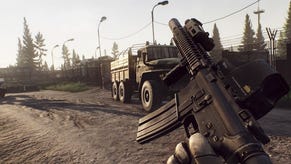Intel moves to shut down locked Skylake CPU overclocking
Is it really the end of the cheap OC party? And what can you do to avoid the lockdown?
Since late December, it's been possible to overclock Intel's previously locked Skylake processors - and as we revealed in our review of the Core i5 6500, this allows for some pretty explosive performance increases in gaming. Now it seems that the party is over as Intel prepares a firmware update likely to spell the end to this unofficial route to extra processing power. Once this mandatory update becomes the standard, only Intel's officially unlocked chips - the Core i5 6600K and the Core i7 6700K - will be overclockable.
"Intel regularly issues updates for our processors which our partners voluntarily incorporate into their BIOS," an Intel spokesman told PCWorld. "The latest update provided to partners includes, among other things, code that aligns with the position that we do not recommend overclocking processors that have not been designed to do so. Additionally, Intel does not warranty the operation of the processor beyond its specifications."
The clock-speed of Intel chips is defined by two factors - base clock and multiplier. The former is typically set to 100MHz, while the latter changes between processors. The Core i5 6500 has a multiplier of 32, meaning a 3.2GHz clock-speed. Intel's K chips allow for adjustments to both variables, while the locked processors can only adjust base clock. However, in our tests with the Core i5 6500, we were able to move base clock to 141MHz, giving a 4.51GHz speed that matches the overall speed we achieved with the more expensive (but more flexible) 6600K.
For the Core i3 6100, we could up base clock to 120MHz and with its 37 multiplier, the chip ran smoothly at 4.44GHz. In our most recent tests - which you can see below - the combination of an overclocked i3 paired with 3200MHz DDR4 produces some remarkable results. The Skylake i3 actually outperforms the Core i5 6500 (assuming it is paired with base-level 2133MHz DDR4). Of course, the i5 itself can currently be overclocked and paired with faster DDR4.
In fact, we're currently running tests on just how far the classic Core i5 2500K can be pushed and how competitive it is with modern processors five years after its release - and let's just say that our overclocked 4.44GHz Skylake i3 is worryingly close to besting the 2500K overclocked to 4.6GHz, even when the older chip is combined with the fastest memory we could give it.
| 1920x1080/Titan X OC (Avg FPS) | Core i3 6100 (3.7GHz/ 2666MHz DDR4) | Core i3 6100 (4.44GHz/ 2560MHz DDR4) | Core i3 6100 (4.44GHz/ 3200MHz DDR4) | Core i5 6500 (3.2GHz/ 2133MHz DDR4) | Core i5 6500 (3.2GHz/ 3200MHz DDR4) | Core i5 6500 (4.51GHz/ 3196MHz DDR4) |
|---|---|---|---|---|---|---|
| The Witcher 3, Ultra, HairWorks Off, Custom AA | 72.3 | 71.2 | 82.9 | 84.9 | 99.8 | 110.3 |
| Assassin's Creed Unity, Ultra High, FXAA | 79.4 | 83.5 | 86.3 | 82.5 | 86.1 | 86.4 |
| Battlefield 4, Ultra, 4x MSAA | 103.1 | 114.8 | 118.9 | 115.1 | 123.1 | 128.9 |
| Crysis 3, Very High, SMAA | 100.2 | 108.9 | 110.1 | 109.6 | 111.9 | 120.9 |
| COD Advanced Warfare, Extra, FSMAA | 159.2 | 169.9 | 178.0 | 169.0 | 185.0 | 185.7 |
| Grand Theft Auto 5, Ultra, no MSAA | 54.7 | 60.1 | 63.8 | 63.4 | 72.6 | 84.6 |
| Far Cry 4, Ultra, SMAA | 79.7 | 90.7 | 97.9 | 84.9 | 98.4 | 121.2 |
| Shadow of Mordor, Ultra, High Textures, FXAA | 134.6 | 135.8 | 141.8 | 136.2 | 137.8 | 142.7 |
With that in mind, it is easy to understand why Intel would lock down non-K overclocking - cheap processors suddenly become much, much more potent and as a consequence, the impact to sales of base-level Core i5 and indeed K-series premium processors could be palpable.
So is there a way around Intel's lockdown on overclocked non-K chips? Well, conceivably, you could buy the required Z170 motherboard now, install the current BIOS update and leave it like that - Intel or the board manufacturer cannot force you to update the BIOS. However, it is likely that new motherboard launches will come with the locked-down BIOS, and there will be no downgrade option. The only question mark now concerns what happens if you downgrade an overclock-compatible board back to the older BIOS. Does something of the update remain on the board or in the OS that keeps the lock in effect? We're talking to board specialists about this and will report back when we can.
As things stand, we always knew that the cheap overclocking party would come to an end at some point, but we should highlight is that Intel has always sanctioned memory overclocking on its top-tier chipsets. We have observed that all Intel chips produce higher in-game frame-rates when paired with faster RAM - indeed, our most recent tests have highlighted that you're holding back your overclock if you don't scale up memory frequency accordingly. The bottom line is this: while one overclocking vector is being shut down, it is still possible to get better performance from locked chips - and as you can see from the video below, a Core i3 6100 running at stock frequencies with relatively fast DDR4 but still match an older generation Core i5 quad running with base-level DDR3.















.png?width=291&height=164&fit=crop&quality=80&format=jpg&auto=webp)

